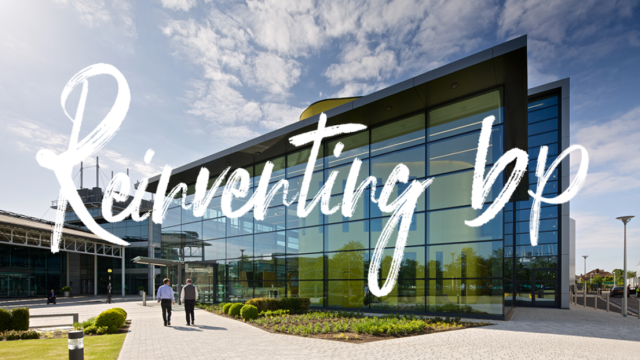Every business needs to remain on top of its supplier relationships but, of course, there is more to procurement than making a few back-of-the-envelope calculations about which materials and services are needed. All manner of concerns can come into play: cost – but also regulator compliance, forward planning and more.
Clearly this is an area where IT systems can play a role, smoothing out what can be a notoriously laborious process. And yet business-to-business purchasing as a whole lags well behind business-to-consumer when it comes to volume. Only 13 percent of business-to-business sales are being conducted online.
So, is procurement a cold house for IT? Or is it that further investment is required? Or are some kinds of suppliers simply easier to deal with face-to-face? After all, buying professional services is quite different from buying a thousand ballpoint pens.
Being digital
Peter Wetherill, senior technology manager at procurement specialists Efficio Consulting, says that as companies go digital it is natural that processes such as procurement come under scrutiny.
“We published a study recently, looking at the future of procurement; looking at whether or not digitalisation is the future. Everyone is [being] pushed to have a digital strategy these days, so we try to turn it into something actionable.”
The objective should be to make things more efficient, he says.
“If you look at things like strategic sourcing, spend analysis and running a sourcing event—those are very ‘processised’ things. We’ve run that as a structure thing for 18 years ourselves [and] we’re building technology now that adds automation to it. It’s repeatable.”
Where the real value is added, though, is not merely in the technology, says Wetherill. Instead, it is in intelligence.
“There are a number of assets you create during the process that are useful the next time. Instead of reinventing the wheel, you use the same things, albeit modified. Technology really lends itself to the strategic part of procurement. Time and time again I’ve sat with clients who have brand new installations, but it has nothing in it and [so] they’re only using ten to fifteen percent of its capability. They’re not getting the business use case out of it.”
In effect, then the question becomes no longer one of either procurement or IT per se, but about how to implement a process that makes use of the intelligence in a business.
“Are various KPIs being hit? Am I paying the right price? It’s part people, part machine, but we’ve built something that rather than trying to map invoices to the project, has a workflow that does all these things properly; it has the rate card in it, it has all the data [and] you can run a large programme through this and show the [for example] five percent where there is non-compliance.
“The technology is not there to remove the human element, it’s there to help make more data-driven decisions,” he says.
Computer says no
Allyson Stewart-Allen, chief executive of International Marketing Partners, says that she has doubts about deepening the intrusion of IT into procurement—at least when it comes to some types of purchasing.
“I think it’s affecting the bidders significantly because they aren’t always clear what the criteria are. They may be bidding for the provision of professional services and, traditionally, those require a relationship of some kind: interaction with the client and the buyers,” she says.
Stewart-Allen says that the challenge of e-bidding is that you do not get to easily convey the values of your business.
“It’s even more difficult with professional services, as you’re buying the people, buying their judgement, and not a product.
“My frustration and challenge is that I don’t get to readily communicate, other than in print, what my sources of differentiation are. They can read my background on the website, but that’s not the same as putting trust in the person’s judgement and the ability to contextualise,” she says.
Nonetheless, IT systems are here to stay, including machine learning (ML) and artificial intelligence (AI) that reduces administration and opportunity for human error.
Procuring IT
One area where it is natural for IT systems to take a lead in procurement is in the procurement of IT itself. This has changed radically as the culture of IT departments has changed—not least as IT now typically has increased board-level representation and it is expected to make a strategic contribution to business objectives.
“It’s an interesting time,” says Charles Blair, a senior management consultant for technology at Efficio.
CIO agendas have changed. They used to be about building IT; pulling all the widgets together and keeping the lights on. Nowadays, with the maturity and commodification of all of these services, you can buy then all in in the form of managed services. CIOs [now] have a much more greater focus on cost,” he says.
However, IT departments, historically, have not has the skillsets needed for procurement, he says.
“IT teams don’t typically have negotiation skills. Procurement as well, they’re not technology guys.
“There was [previously] a bit of a ‘project culture’, and procurement wasn’t involved until the end of the process. Procurement ended up with a really bad name. Likewise, some people in procurement don’t understand IT and challenged on the wrong things, [while], on the other side, IT would be approaching suppliers in the wrong way and eroding any levers procurement might have,” he says.
Nonetheless, despite the trend toward cloud computing and external service provision, there is greater need for procurement in IT rather than less. True, fewer servers and switches are being bought, but those were always easier to buy than services.
“Cost in technology is on the increase as software is invested in instead of people, and also with the trend for using suppliers,” says Blair.
“There’s no reason for most companies to have their own service desk. It’s much cheaper and more efficient to get a service provider who does it all the time to run it. [But] Services like that need to be obtained in accordance with service level agreements (SLAs) and (key performance indicators (KPIs),” he says.
So, in fact, the stakes are higher than ever—and they are also not on-off.
“Procurement is not only about sourcing the solution, but also about managing it,” says Blair.
Whether for IT services or any other kind one contractor relationship, procurement teams must, says Allyson Stewart-Allen, make it clear to the business that any IT used should be there to support the decision-making process, not replace it.
“The issue that the procurement folks have that they don’t push back. There’s a difference between buying professional services versus buying pens,” she says.
In the end, for Stewart-Allen, humans may be aided by machines, but letting the machines replace them is a false economy.
“They’re seeking efficiency, but end-up making bad decisions,” she says.
“Maybe they could make better decisions if they applied different processes to services vs goods. I think that the challenge is the one-size-fits-all mentality. There is often bind faith put in technology and what it’s going to do for you, versus the reality. It’s not a great idea when you’re buying people,” she says.











